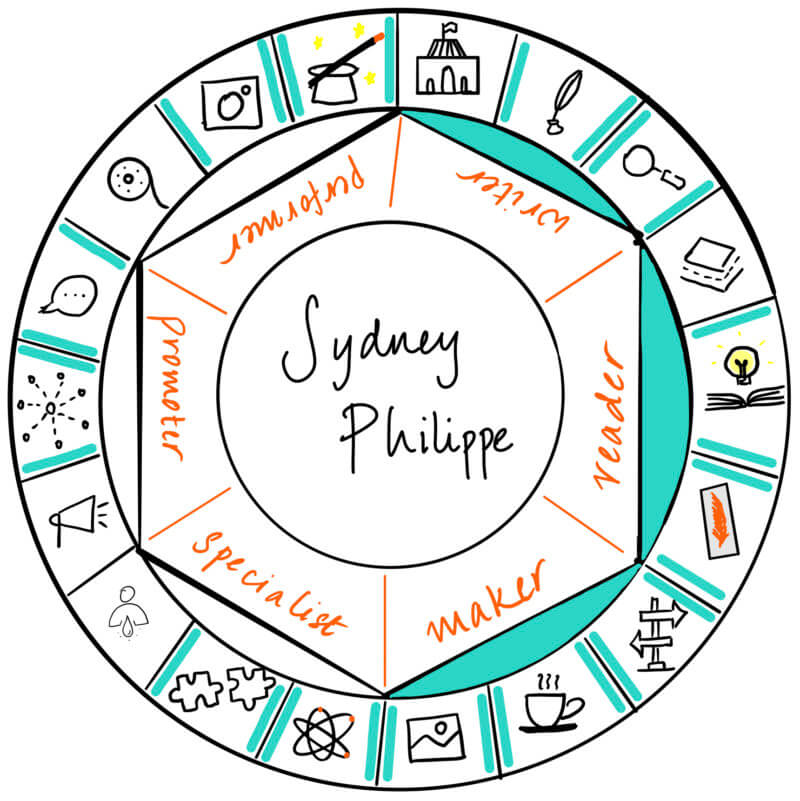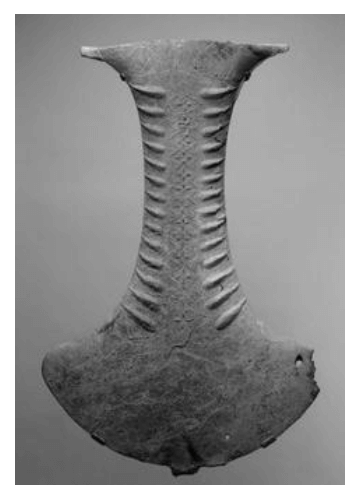Hello, friend! Stories like Michelle Paver’s Chronicles of Ancient Darkness have often made me wonder how authors research history, times so long ago when language was not the same as ours and the lifestyle that people led were starkly different too. When author Sydney Philippe reached to me about his novel, Spirits of the Sun, I had the perfect opportunity to learn about how he did his research as the book is set in Indonesia, 3000 years ago!
Sydney Philippe is the pen name for Julian Sydney Wright. He lives in the City of Bath, England, with Jhell and their young son called Philippe. Sydney has worked in several countries around the world, as a project manger, school teacher, lecturer and software developer. He has written extensively about the environmental problems with bees and pollination in the Philippines on his blog. This stimulated further research into humanity’s relationship with nature, and led eventually to writing his novel, Spirits of the Sun.

Now that we know more about Sydney, let’s learn about his research process!
Researching for a novel set thousands of years ago
A guest post by Sydney Philippe
First you need the inspiration, or at least a ‘question’ that starts the process.
‘What drove people to sail across vast open oceans to an unknown destination?’ This question came to me during a motorbike journey at night, following a particularly difficult day.
Perhaps my own background as an evolutionary biologist, predisposed me to have a theory that helped direct the next questions. What if these people are sailing away from a rich fertile land and putting their lives in danger in small boats on a dangerous ocean? What would drive them to do it? Would they risk their lives, and the lives of their loved ones, just for adventure? Would they do it in pursuit of a ‘god’ or in the hope of finding ‘treasure’? Or would they do it as a result of ‘conflict’ and as ‘a necessity’ to survive?
Thor Heyerdahl undertook the Kon Tiki expedition in 1947 to demonstrate his own theory of how people reached the South Pacific islands. He believed these ancient Polynesian people were driven out of South America thousands of years ago because of conflict with other peoples. But, apart from trying to re-enact history by pretending to be ancient seafarers, how can else can we do research for a historical novel set thousands of years ago?
There is no documentary evidence from thousands of years ago – so how do you find out?
There is some archaeological evidence. For example, remains of ancient planked boats have been found on Mindinao in the Philippines – one of these large boats is carbon dated as being 1,700 years old. These boats are similar in design to the traditional outrigger boats found in Indonesia, and may even come from there. There is also some other evidence that metal technology came to the Philippines about 2,500 years ago from Indonesia. Recent scientific research also identifies linguistic and genetic connections between people in northern Sulawesi and those in southern Mindinao.
So, I am starting with the underlying principle that people were driven by conflict to sail from Indonesia to the Philippines. But what kind of people were these? And what was the conflict?
My attention focused on Sulawesi, a large island in the Indonesian archipelago, from which early seafarers appeared to have sailed northwards towards the Philippines. (Some archaeologists say that early arrivals in the Philippines might also have come from present-day Taiwan and Vietnam.)


What were these people like? How do you find out?
Early civilizations often adopted ‘animist’ religions by giving spiritual essences to objects, plants, and animals. In particular, the Sun was usually believed to be the supreme and eternally powerful creative Spirit. Deities, storytelling, and ceremonies help to pass knowledge and traditions through the generations. Modern Indonesia is a diverse society – indeed, many Sulawesians still venerate the mystical Sun Spirit who gave birth to their tribal ancestors.
Other historical evidence, such as the 3,000 year-old bronze age ‘Must Farm’ settlement in England, show that tribes were often in violent conflict with each other. Survival is a primal urge. This selfish instinct is tightly bound to sex and reproductive success – evolution has made sure of that. In addition to the basic needs of food, water, and air – the primal urges for survival are selfishness, sex, and violence.
Early human conflicts have been fancifully attributed to disputes over status, or kings, or territory, or gods, or even gold. However, none of these causes can be determined by the archaeological record. It is known, however, that a main cause of death among female humans was childbirth – and so, young and fertile females were a ‘limited resource.’ The evidence also clearly shows that males did the vast majority of fighting and dying in the violent conflicts. In other words, it is highly likely that the males were fighting over females.
What was their environment like? How do you find out?
This is where my knowledge as a biologist and ecologist comes into play. Even if you have never been to Sulawesi so much can now be ‘accessed’ via the internet. Google Earth allows you to enter ‘street view’, views can be seen, and distances measured. Wikipedia is useful too for cross-checking with other information sources. But what was Sulawesi like thousands of years ago?
The earliest scientific records are from people like Alfred Russel Wallace and Sydney J. Hickson who researched the fauna, flora, and the ethnology of Sulawesi. Their writings are now accessible over the internet. A remarkable insight can be gained into the landscape, ecology, and personal lives on Sulawesi – still untouched by modern tourism, and as such relatively untainted by outside influences.
What were my character’s lives like? How much can I infer?
They were humans, like us in many ways – but without all the modern knowledge and trappings. But unlike most of us, they were fully immersed in their natural environment – and to survive had to become knowledgeable in ways that we can only speculate. But like us, they too lived in a neurotic state in which our primal urges are often in conflict with our higher thoughts.
Society requires that our thoughts control our urges – and for many, religious faith is also important. This complex combination has stimulated the human intellect, encouraged invention, exploration, and also helped to advance warfare. Living within small tribes, they also had to co-operate and trust each other to survive, where the physical and emotional challenges could well have been extreme.
So now I have tribal communities struggling to survive, where kinship and families are of the highest importance, and where ‘law enforcement’ is usually in the hands of the ‘strongest’ men or biggest tribe. And rich emotions of lust, love, pride and power, play out as ‘marriages’ are decided.
Enter my cast of characters: A small tribal family, of Malay descend, under threat from a larger tribe, of Java descent. Then include a young tribesman, raised within such a constrained community – fearful of the dangers all around him, but who happens to be socially astute and highly intelligent.
What’s a book set a long time ago, in the future or in the past, that you have loved? What about the world drew you to it?
Thank you for hanging out with us today. Learn more about Sydney on his website. Spirits of the Sun is available on Amazon and you can also find it on Goodreads.
Cover image: Photo by CHUTTERSNAP on Unsplash

Be First to Comment